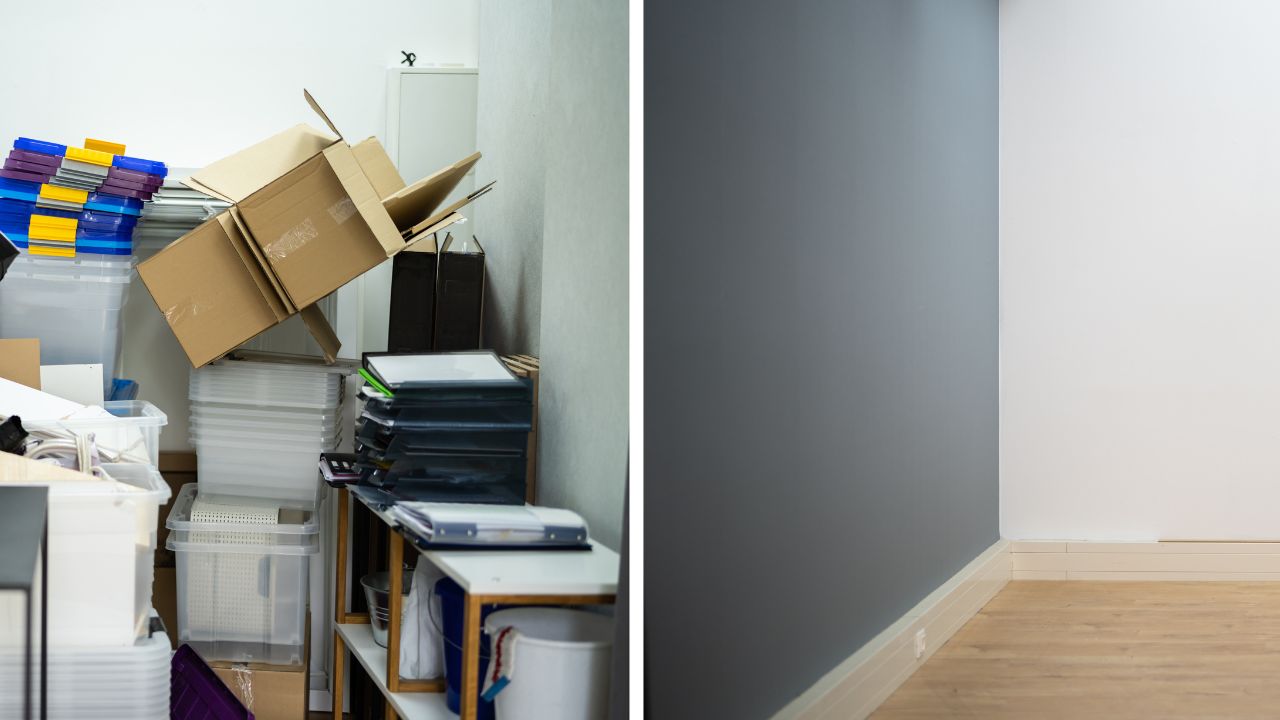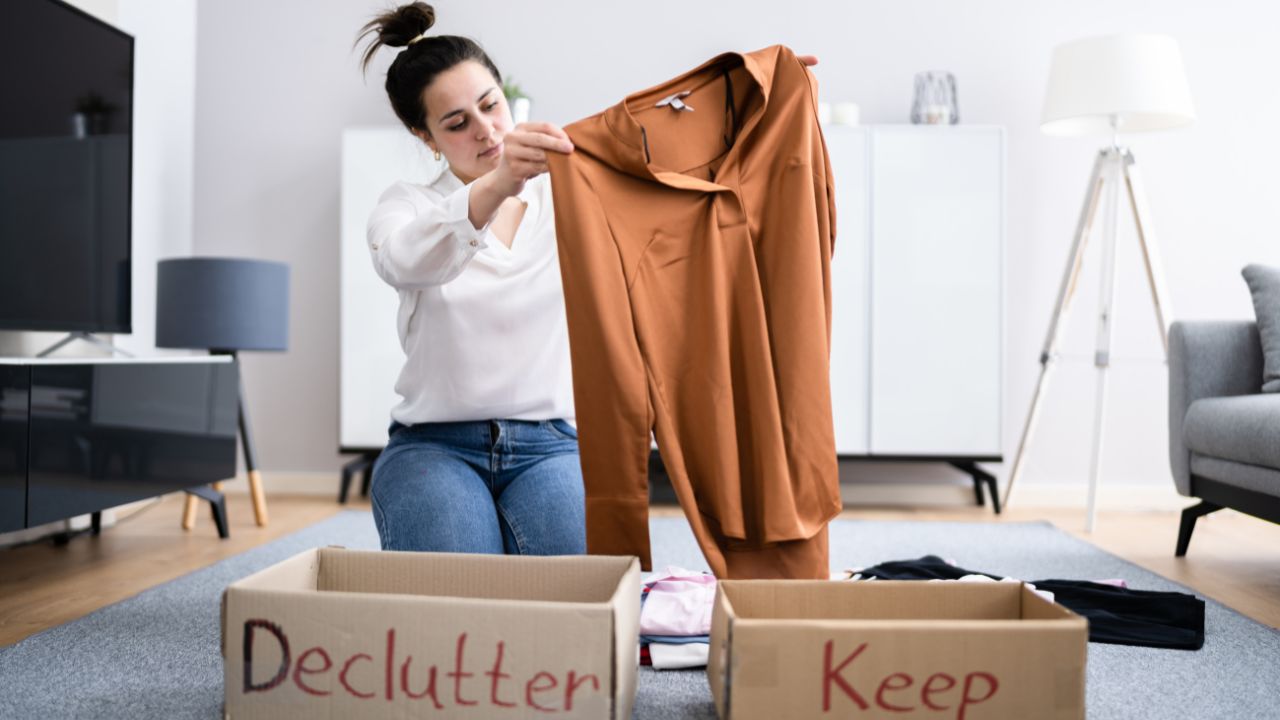Last Updated on September 16, 2023 by Pro Handyman Australia – Editorial Team
The aspiration for a simpler, less cluttered life resonates with many of us. Yet, the mere thought of reducing possessions can evoke feelings of overwhelm and anxiety. For those in the bustling heart of Australia’s iconic city, seeking help from our hand picked list of the top decluttering services in Sydney can be a game-changer. The good news is that the decluttering journey doesn’t have to be arduous. In fact, with the right assistance, the numerous benefits that come with decluttering can make the process both rewarding and enjoyable.
Advantages of a Clutter-Free Existence
Many people hesitate to take the first step towards decluttering, unaware of the multiple advantages that will become apparent as they proceed.
- Enhanced Cleaning Experience: The laborious nature of cleaning becomes amplified when you’re working around items to which you have no emotional connection or that you actively dislike. With fewer items cluttering your space, you’ll find cleaning to be less stressful.
- Streamlined Organization: The frustration of misplacing items will be a thing of the past. The reduction of clutter makes it easier to find things, ensuring that items no longer inexplicably “vanish.” You can move freely in your space, appreciating it rather than navigating around obstacles.
- Psychological Well Being: A cluttered environment often becomes a source of stress. A tidy, well-organized space, on the other hand, can make you feel happier and more peaceful.
- Financial Health: Reducing the habit of acquiring material possessions leads to less spending, healthier bank accounts, and lower credit card balances. The absence of unnecessary, expensive items frees up your finances.
- Economic Resilience: A staggering number of American households live paycheck to paycheck, with many carrying credit card debt. The financial freedom that comes from decluttering and adopting a minimalist lifestyle helps build a financial safety net for unforeseen emergencies.
- Passion and Happiness: The freedom from debt and clutter allows you to focus on what genuinely brings you joy rather than keeping up with societal pressures, resulting in a happier and more fulfilled life.
Understanding these benefits sets the stage, but you may still be left wondering—where do I start?
Embarking on Your Decluttering Journey
If you’re wondering where to begin, don’t worry; you’re not alone. The key is to approach decluttering with a sense of fun and excitement, for success often eludes those who don’t find joy in their endeavors. With this mindset, decluttering your life will not only be an achievable task but also a rewarding one.
Innovative Strategies for Effective Decluttering

If you find yourself grappling with where and how to start decluttering your home, know that you’re not alone. Often, a creative approach is needed to break through the inertia and start simplifying your life. Below are some inventive decluttering techniques to get you on track towards having a home that’s free from unwanted clutter.
Baby Steps: The Five-Minute Rule
If the thought of decluttering is daunting, why not ease into it? You can build momentum by dedicating just five minutes each day to decluttering. This manageable time commitment makes the task less overwhelming and helps you make steady progress.
The One-Item-a-Day Strategy
Consider parting with one item every day. This means that you would remove 365 unnecessary items from your home over a year. If this becomes too easy, feel free to ramp it up to two items per day, resulting in a yearly total of 730 items removed from your living space.
The Trash Bag Tactic
Grab a trash bag and fill it as quickly as you can with items you can donate. It’s a swift and immediate way to see tangible results, making the overall decluttering journey less daunting.
Smart Wardrobe Management
Identify clothes you never wear by hanging all your garments using hangers that are facing the opposite direction. Flip the hanger each time you wear the piece of clothing. After a few months, any hanger that remains inverted signifies clothing that should be donated or discarded.
Utilize a Decluttering Checklist
A visual representation can provide the focus needed to start your decluttering project. A checklist is not only a great way to prioritize but also to track your accomplishments.
The 12-12-12 Challenge
Challenge yourself to identify 12 items to throw away, 12 to donate, and 12 to return to their designated places. This creates a balanced approach to decluttering, combining discarding, donating, and organizing into one cohesive strategy.
The Fresh Perspective Approach
Try to see your home through a visitor’s eyes. What’s your first impression regarding cleanliness and organization? Use these insights to guide your decluttering efforts, focusing on areas that immediately catch your attention.
Visual Motivation: Before and After Photos
Select a small area of your home, like your kitchen counter, and take ‘before’ and ‘after’ photos. Comparing these images will not only motivate you but also provide a tangible measurement of your progress.
Enlist the Help of a Trusted Friend
Ask a friend or family member to walk through your home and suggest a few items that could be discarded or given away. You can keep an item only if your friend agrees with your rationale for doing so. If not, it may be time to part with it.
Employ the Four-Box Method
Label four boxes as the following: “Trash,” “Give Away,” “Keep,” and “Relocate.” Go room by room, placing every single item into one of these categories. This comprehensive approach will make you aware of how much you truly own, providing clarity on what to do with each possession.
While there are myriad ways to initiate the decluttering process, the underlying objective remains the same: to take that all-important first step. Realize that a life less cluttered is not just about the physical space—it also opens the door to greater freedom, well-being, and peace of mind.
Crafting a Realistic Decluttering Timeline

The timeline for your decluttering project can range from a single day to an entire month, depending on the volume of items you own. If your schedule allows, you may even opt for a weekend-only approach to decluttering. Regardless of the duration you choose, ensure your goals are both realistic and attainable to prevent feeling overwhelmed during the process.
Breaking Down Your Space and Time
To make your decluttering journey manageable, segment your living space into distinct areas and estimate the time required for each. Incorporate these estimates into your overarching timeline, allowing some buffer time for any unexpected delays or complications. Organizing your time and tasks in this manner helps stay focused and prevents you from losing track of your responsibilities.
The Importance of Pre-Planning and Preliminary Cleaning
One pitfall to avoid is the impulse to haul out all your belongings without a clear sorting strategy. Doing so often results in wasted time and a chaotic environment that hinders rather than helps. As a best practice, consider doing a general cleaning before embarking on your decluttering mission. This ensures that everyday items are neat and out of your way, facilitating a smoother decluttering process.
Starting Small to Gain Momentum
Begin your decluttering initiative in an area with minimal clutter. Completing a less challenging space quickly provides a sense of achievement and spurs motivation to tackle more cluttered spaces. The psychological boost gained from this initial success can be a crucial factor in sustaining your enthusiasm and energy throughout your decluttering timeline.
Navigating Disposal Options for Decluttered Items
Once you begin decluttering, it’s extremely important to think ahead about how you’ll dispose of items you no longer wish to keep. Sorting items into designated bins for recycling, trash, and donations as you go can streamline this process considerably.
Understanding Local Recycling Guidelines
Awareness of your community’s recycling protocols is crucial, especially for specialized items like electronics that typically can’t be tossed into standard recycling bins. Maintain a separate container for these items, so you can later take them to a facility that handles specialized recycling.
Considering Dumpster Rental for Large-Scale Decluttering
If you anticipate a substantial amount of waste that simply cannot be recycled or donated, it may be worth renting a dumpster. Doing this in advance ensures you have a convenient disposal method for items that are no longer usable, saving you multiple trips to a waste disposal site.
The Donation and Resale Route
For items still in good condition, consider donation or resale as a means of disposal. In addition to a dedicated donation bin, you might accumulate a separate collection of items suitable for a garage sale. This not only helps you declutter but also provides a way to recoup some value from your unused belongings.
Personalized Bins for Gifts to Friends and Family
If you’re decluttering with the intention of gifting specific items to friends or family, it’s a good idea to have separate containers designated for each person. As you sift through your belongings, you can place items into these bins, making the gifting process more organized and thoughtful.
Tailored Strategies for Decluttering Different Rooms
Reorganizing Closets and Storage Spaces
Starting with overflowing closets and storage areas can be an effective first step in your decluttering journey. By addressing these spaces initially, you open up room for relocating other items that need a designated place, thereby streamlining the organization of your entire home.
Optimizing the Kitchen for Functionality
In the kitchen, the focus should be on maintaining clear countertops to simplify food preparation and dining. Ensure that utensils, dishes, and cookware have designated storage spaces when not in use. This not only enhances your cooking experience but also improves your kitchen’s aesthetic appeal.
For a restorative night’s sleep, it’s essential that your bedroom remains a sanctuary, free from stress-inducing items. Remove any objects that do not contribute to relaxation, such as bills or extra storage items. Even the location where you charge your laptop might be better suited to another area of your home.
Streamlining Living Areas for Comfort and Movement
When it comes to your living areas, it’s not just small items that can contribute to a sense of clutter. Furniture arrangement plays a significant role as well. Make sure that there are unobstructed pathways, enabling people to move freely without having to navigate around furniture like couches, chairs, and coffee tables.
Maintaining a Productive Home Office Space
In a home office, it’s vital to create and maintain a zone dedicated solely to work-related activities. Minimize distractions by promptly removing any unrelated items that find their way into this space, such as children’s toys or dishes from meals. This ensures that your office remains a hub for productivity rather than serving as a catch-all room.
Recognizing the Need for External Assistance
When to Seek Help in Your Decluttering Journey
Sometimes the process of decluttering can feel overwhelming, or you might find that organizing just isn’t your strong suit. If you find yourself questioning the process, it may be an indicator that you need external help.
Leveraging Personal Networks for Objectivity
Family and friends can often provide a fresh, third-party perspective on what items are essential and what can be parted with. Their detachment from your possessions might offer the objectivity you need to make tough decisions.
Considering Professional Guidance
If you find that your decluttering efforts are consistently unsuccessful and causing you stress, you may want to consider enlisting the services of a professional organizer. A qualified expert can not only guide you through the process but also offer solutions that are customized to your lifestyle and needs.
Post-Decluttering Room Cleaning Strategy

Sequence Your Cleaning for Optimal Results
After successfully decluttering your room, you’re in an ideal position to engage in thorough cleaning, free from obstructions. While there’s no universal blueprint for cleaning, the order in which you tackle tasks can significantly affect the end result. Below is a guideline designed for deep-cleaning your primary bedroom.
Kickstart with Laundry
Begin by gathering all your dirty clothes and taking them to the laundry room. Use this time to wash your bedsheets and blankets as well. Initiating the laundry process allows you to continue cleaning other aspects of your room while the washing machine does its work.
Dusting from Top to Bottom
Focus initially on elevated areas like fan blades and high shelves, as gravity will cause the dust to settle downwards. This approach ensures you don’t end up cleaning lower areas twice. Also, don’t overlook less obvious spots like the tops of picture frames, door frames, television sets, and window blinds.
Wipe Down Surfaces
For surfaces that require more meticulous attention, such as dresser tops and nightstands, utilize a damp cloth combined with an all-purpose cleaner or antibacterial wipe. This not only removes dust but also sanitizes the area.
Vacuum Strategically
Pay close attention to the spots that were previously cluttered, as these areas are likely to have accumulated more dirt. If your vacuum cleaner has a hose attachment, seize the opportunity to clean between couch and chair cushions, or along the seams of your mattress.
Address Glass Surfaces
Clean your windows and mirrors using either a specialized glass cleaner or a homemade mixture of white vinegar, dish soap, and water. The idea is to leave these surfaces streak-free and gleaming.
Dispose of Cleaning Waste
Collect and dispose of the cleaning wipes, paper towels, and any non-reusable rags you’ve used during the cleaning process. This step ensures that you’re not leaving behind any clutter you’ve worked so hard to eliminate.
Finalize by Putting Clothes Away and Remaking the Bed
Once your laundry is complete, immediately fold or hang your clothes rather than leaving them to be dealt with later. Finishing by remaking your bed with fresh sheets offers a satisfying conclusion to your cleaning day, symbolizing a fresh start.
Addressing Common Queries on Home Decluttering
Crafting an Effective Decluttering Checklist
One of the most straightforward methods to manage your decluttering process is to create a checklist. This tool helps you monitor your progress and stay organized. To jumpstart your efforts, consider selecting 5-10 items from an existing list and tackle them first. You’ll be surprised at how quickly your decluttering momentum accelerates.
The Role of Professional Organizers
While professional organizers can offer expertise, they’re not a necessity for effective decluttering. With the right strategies and tips, such as the ones in this article, you can successfully declutter your space alone or with a group.
Timing and Pace of Decluttering
Although it might be tempting to remove all clutter in one fell swoop, decluttering isn’t typically a race against the clock. The process can extend over a period, or even become a routine exercise. The key is to begin; each step you take brings you closer to a clutter-free life than you were the day before.
The Aesthetic Impact of Owning Less
Contrary to popular belief, a simplified home doesn’t necessarily translate to an empty or dull environment. On the contrary, reducing clutter often enhances tranquility in your living spaces. Your home transitions from a source of stress to a sanctuary for rest and relaxation.
Deciphering ‘Declutter’ and ‘Unclutter’
Though often used interchangeably, the terms ‘declutter’ and ‘unclutter’ subtly differ in implication. The prefix “de-” in declutter suggests a more thorough, perhaps permanent resolution to clutter. It’s a matter of preference, but ‘declutter’ may resonate better if you’re someone who wants a long-term fix for your issues.
Identifying the Right Time to Declutter
Determining the ideal time to embark on a decluttering journey varies from individual to individual. Generally, if your belongings begin to overwhelm you and limit your freedom, it’s a strong indicator that you’re ready to make a change. Keep in mind that the sensation of being overwhelmed is subjective and can differ among people.
The Objective of Decluttering: Embrace Your First Step with Enthusiasm
Decluttering is more than clearing up physical spaces; it’s about carving out room for freedom, serenity, and a new lease on life. Regardless of which strategy you employ to begin this transformative journey—whether it’s one from a list of ten or a unique method you’ve discovered—the aim should be to approach your initial step with both excitement and purpose.
Unveiling a Fresher, Freer Living Space
Hidden behind the piles of clutter are the invaluable rewards of a decluttered life—a sense of freedom, clarity, and renewed energy. The methodology you choose for clearing out the chaos is indeed your prerogative, giving you the flexibility to tailor the task according to your wants and needs.
In conclusion, the decision of how to declutter your home is profoundly personal, but the universally shared benefit is the revitalization of both your physical and emotional landscape. So, whatever your chosen starting point, approach it with enthusiasm and anticipation for the uncluttered life that awaits you.
